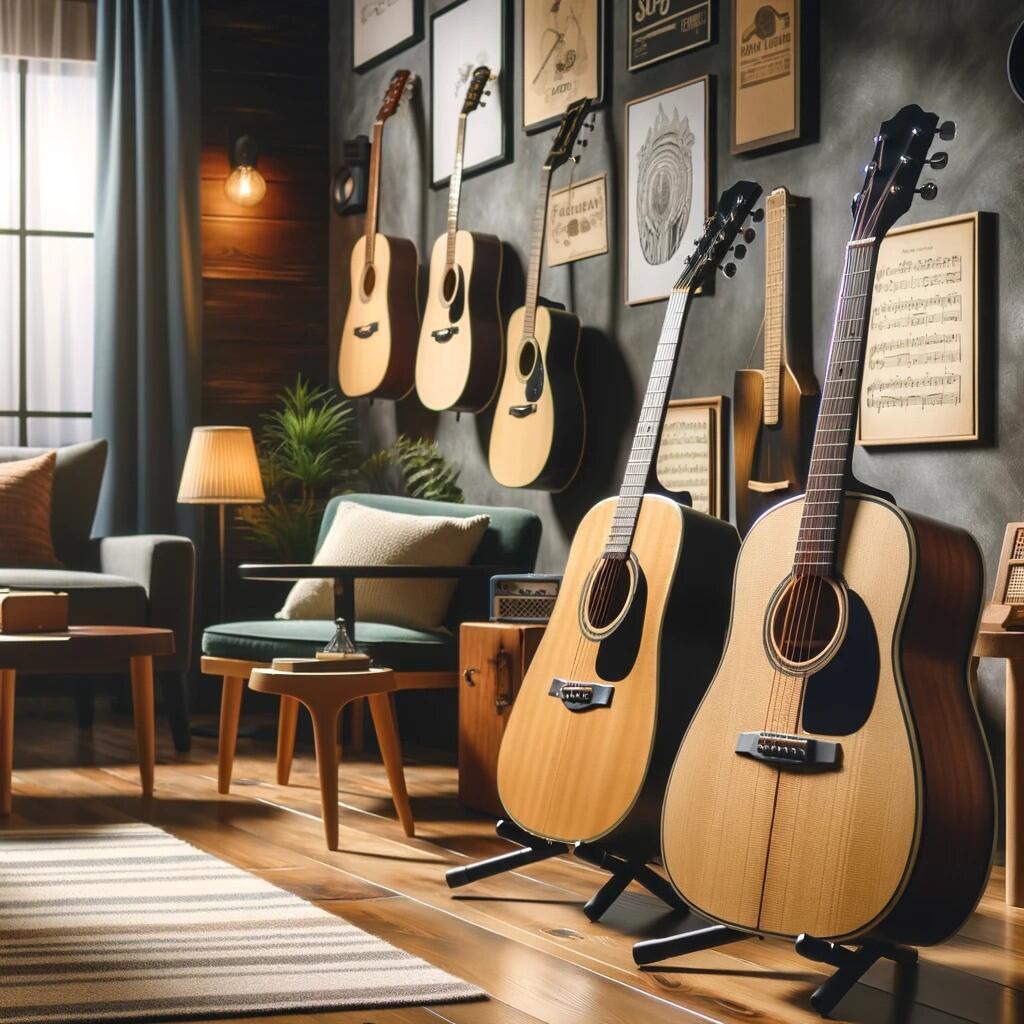
Laminate vs. Solid Tops for Acoustic Guitars
Laminate vs. Solid Tops for Acoustic Guitars
Choosing the right tonewood for your sound & budget.
Regardless of skill level, choosing the right acoustic guitar is not a simple task. Beyond body style and brand, a crucial decision lies in the type of top – laminate or solid wood. Each material offers distinct advantages and disadvantages that can significantly impact your playing experience and the overall sound of your instrument.
Laminate Tops:
Laminate tops, typically constructed from layered plywood, offer several benefits. Firstly, they are generally more affordable compared to solid wood guitars. This makes them an attractive option for beginners who are still honing their skills or musicians on a tighter budget. Additionally, laminate tops exhibit greater resilience to temperature and humidity fluctuations. This makes them ideal for players who travel frequently or live in areas with extreme climates, where a solid wood guitar might be susceptible to warping or cracking.
Laminate guitars also tend to be more durable, as the layered construction offers better resistance to accidental bumps or dings. This can be a deciding factor for players who perform live or practice in environments where the guitar might encounter occasional wear and tear.
However, the affordability and durability of laminate tops come at the expense of sound quality. Laminated wood offers less resonance compared to solid wood, resulting in a generally thinner and less complex tone. While some high-quality laminate guitars can produce a decent sound, they may lack the warmth, richness, and dynamic range that solid wood tops are known for.
Solid Tops:
Solid wood tops, usually crafted from spruce, cedar, or mahogany, are the heart and soul of high-quality acoustic guitars. The primary advantage of solid wood lies in its superior tonal qualities. Solid wood resonates more freely, allowing for a richer, fuller, and more complex sound that develops and matures over time. As the wood ages, the tonal characteristics of the instrument can even improve, adding depth and character to your music.
Solid wood guitars also offer greater dynamic range. This means they can respond more effectively to the nuances of your playing, translating the subtle variations in pick attack and finger pressure into a wider spectrum of volume and tonal colors. This responsiveness allows for a more expressive playing experience, where your technique translates directly into the sound you create.
Beyond the Top: Considering Other Factors
While the type of top plays a significant role in the sound and price of an acoustic guitar, it's important to consider other factors as well. The back and sides of the guitar, typically constructed from mahogany, rosewood, or laminate wood, also contribute to the overall tone and projection of the instrument. Additionally, the quality of the neck, fretboard, and hardware all play a vital role in the playability and overall feel of the guitar.
Finding the Perfect Match:
Ultimately, the choice between laminate and solid tops is a personal one. If affordability and durability are your top priorities, a laminate guitar might be the perfect fit. However, if you seek an instrument that delivers superior sound quality, responds dynamically to your playing, and matures over time, a solid wood top is a wise investment.
Here's a quick guide to help you decide:
- Laminate: Ideal for beginners, budget-conscious players, or those who travel frequently.
- Solid Wood: Ideal for players seeking superior sound quality, dynamic response, and long-term tonal development.
Remember, the best way to make your decision is to try out different guitars in person. Compare the feel, playability, and most importantly, the sound of both laminate and solid top instruments. This hands-on experience will allow you to connect with the guitar that best suits your musical style and aspirations.















